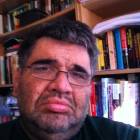
It’s always a surprise to see brown people at an Institute of Public Affairs event, but there they were. Last Friday night a youngish crowd including several Sri Lankan women and a very anti-Communist Chinese guy gathered at a trendy Melbourne CBD bar to launch the first book of a young IPA-type named Mathew Lesh.
The book, Democracy in a Divided Australia, is highly referenced with plenty of data and quantitative analysis. The notes and bibliography combined make up 73 pages. Though it looks like a PhD thesis, to Lesh’s credit, the 210 pages of text are very accessible read. Quite a change from the poorly referenced negativity one usually gets from our handful of right-of-centre thinktanks.
Despite this, don’t expect to read this paragraph on the opinion pages of The Australian:
Not everyone should be expected to live the same lifestyle; within the confines of the whole, every sub-culture should be able to keep their distinct qualities … We should celebrate, or at least tolerate, political, cultural, social, religious, racial, ethnic, gender and sexual preference differences … Australia can only function as a connected nation. What we share is more than what divides us.
It’s enough anti-assimilation policy to give Andrew Bolt a cardiac arrest. So exactly what is the problem then? Why the subtitle “the inners-outers ripping us apart”? Who are the “outers” and who are the “inners”? Basically, the inners are inner-city cosmopolitan types, highly educated, able to afford an overseas holiday and eat out often without any fear of African gangs or South African white farmers. Inners can be left or right. Initially the inners were very happy when Malcolm Turnbull knocked off Tony Abbott.
The outers can also be left or right. They grew up in outer suburbs, in regional areas or in the bush. They prefer beer to a chardonnay, occupy blue-collar jobs and read newspapers freely available at McDonalds.
Other groups are also included among the inners and outers — the “aspirational”, the “old elite” and “new elite” and the “left behind”. You’ll have to invest around $30 and buy the book to learn how the whole model fits together.
The book was launched by the youngest looking person in the room, one Senator James Paterson, a former IPA apparatchik and no good friend of Malcolm Turnbull. Paterson delivered an amusing speech referring to incidents from the life of the book’s author why the latter was more of an inner than an outer. It sounded more like a speech given by Paterson as best man at Matthew Lesh’s wedding.
There were lots of in-jokes which showed the speaker assumed he was only speaking to an in-crowd. Paterson should get public speaking lessons from Turnbull.
Lesh took to the floor and provided a 10-minute summary of his argument. He insisted I not record his speech, so I can’t provide direct quotes. In question time, I asked him whether he considered “outers” to also be defined by ethnicity, migration status, gender etc. I noted that I couldn’t see too many Somalis or South Sudanese in this elite thinktank audience.
To my surprise, quite a few of the white folk nodded. Lesh said he didn’t collect data on ethnicity and other factors I’d mentioned. Afterwards John Roskam, the IPA’s Executive Director, came up to me and the four Sri Lankan ladies and warmly welcomed us. He also encouraged us to join the IPA and even said we could pay our membership fees later.
Could it be that I have been mischaracterising the IPA all along? Or is the libertarian right in Australia beginning to realise that it’s uber white image is doing it no favours and that the free market of ideas, just like the free market of goods and services, tends to punish racism?








Jeebus…between this book launch shit and the bollocks about the Bachelor I’m beginning to thing I’m back reading the Guardian.
At least you could have read the damned book and reported on that, rather than the crowd at an IPA shindig!
Yes, its an article about nothing that Larry David would admire
Very true Hamster.
Lesh’s book appears to run along the same lines as “The road to somewhere” by David Goodhart with the Inners/Outers substituting for the Anywheres/Somewheres.
Can’t tell from the article though.
Actually I imagined it more resembled Steve Richards’ “The Rise of the Outsiders – How Mainstream Politics Lost Its Way”. But titles can be deceptive.
“Could it be that I have been mischaracterising the IPA all along? Or is the libertarian right in Australia beginning to realise that it’s uber white image is doing it no favours and that the free market of ideas, just like the free market of goods and services, tends to punish racism?”
Ha, has! Just what they want you to think! Sucked in! They will use racism/xenophobia whenever it helps to divide and rule. African gangs, Muslim asylum seekers, Sri Lankan Tamil terrorists, etc. etc. Listen carefully to their apparatchiks in actual action where it counts: in elections.
‘He insisted I not record his speech, so I can’t provide direct quotes.’
Perhaps Teeline Shorthand still has its uses, eh Irf? 😉
I’m sure it does. But if I am to get anywhere in the world of modern media, I must avoid common sense in favour of technology.
Possibly you could use both….? 🙂
So there should be tolerance of sub-cultures but these damn inners and outers are tearing us apart.
Is that the gist?
The tolerant must tolerate the intolerant but not the intolerable.
I can accept that the IPA exists but I find its malignity unacceptable when it intrudes into the public sphere through its adherents.